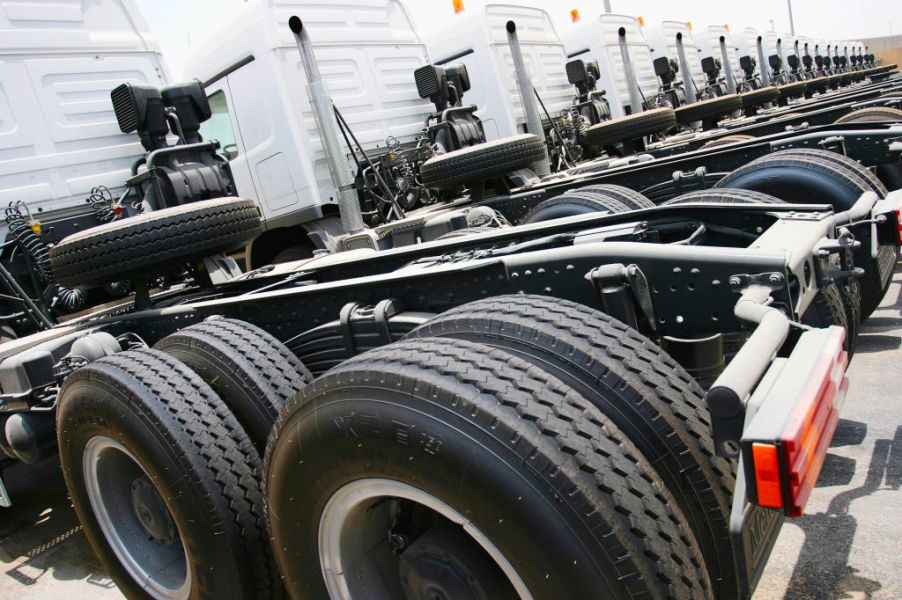
There’s a Hidden Safety Hazard of Dually Trucks
Have you noticed that some trucks have extra rear wheels? These trucks, with their two pairs of rear wheels, are called dual rear wheel, DRW, or dually trucks. The extra tires play an important role for commercial and heavy-duty trucks. But why do these trucks have more wheels than other trucks, and what are the benefits? There is one clear risk to this style of truck.
Dually trucks
The dually pickup truck first appeared in 1973, coming out from GM. Before then, dually trucks had been available for many years but didn’t come as a pickup with a bed. At that time, they were available on commercial trucks or chassis cabs that could be customized. Ford’s first dually pickup truck arrived in 1980.
These trucks are useful for towing incredible sums of weight, whether personal or commercial, and have other differences aside from the extra wheels. These trucks also have a stronger and larger rear axle, plus a longer fender that can cover all the rear wheels.
Dual rear wheels can be found on some RVs and one-ton trucks (per Tire Rak). There are a number of heavy-duty trucks that have dually options, including the Ford F-350, Chevy Silverado 3500, the GMC Sierra 3500 HD, and the Ram 3500. There are also some commercial trucks that always come with dual rear wheels.
Why have extra rear wheels?
According to Akin Ford, having dual rear wheels provides additional safety and stability when the truck is used for heavy-duty towing, like with a horse trailer, boat, or an RV. The extra wheels help spread out the weight of the payload.
The extra wheels also give the truck more contact with the road and help improve balance and stability, especially when it’s windy. An additional benefit is that, if a tire blows out, it is easier to maintain control with the remaining three rear wheels. The truck can then be driven and stopped safely.
The drawbacks of dually trucks
There are a few downsides to having a dually truck, some minor and one more serious. Off the bat, expect higher costs of maintenance since extra tires need to be purchased and maintained.
There are slightly higher gas costs as well. Plus, there may be additional registration costs, since in some locations these trucks need to be registered as commercial vehicles regardless of whether it’s used for commercial or personal needs.
In addition to higher costs, these trucks are wider, so it can be tricky to park them in regular spaces. These bigger trucks tend to have a less comfortable ride than trucks with single rear wheels. Especially when unloaded, dually trucks have a bumpier ride, so people who don’t have extreme towing needs tend to opt for trucks with single rear wheel tires.
By far, the most serious risk for dually trucks is that they can hydroplane more easily. This is because tires with a wider footprint tend to hydroplane easier. By adding the additional tire, these trucks naturally have a much wider tire footprint.
What to do about hydroplaning
Generally, in dry conditions, the extra rear wheels improve braking performance due to the increased contact with the road. However, dually trucks can be tougher to handle than single rear wheel trucks. This is especially true when there are wet, icy, or slick conditions, and these trucks do have an increased risk of hydroplaning.
If your truck does hydroplane, don’t slam on the brakes or gas. Instead, Toyota of Cool Springs says to keep your foot lightly on the gas, and try to steer straight ahead to dry road. To help reduce the risk of hydroplaning, make sure the tires aren’t worn and that they do have the correct pressure. Some Other tips from SafeMotorist.com are to drive at slower speeds and in a lower gear.


